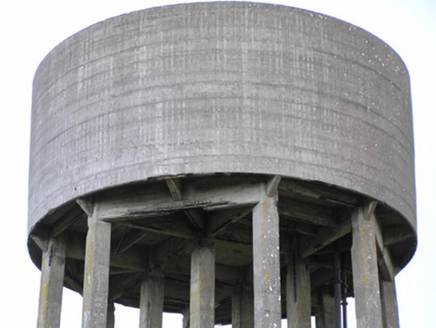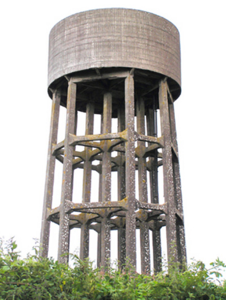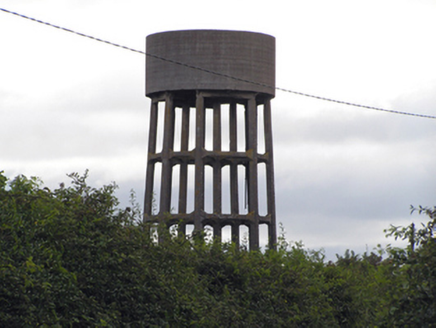Survey Data
Reg No
20906640
Rating
Regional
Categories of Special Interest
Architectural, Technical
Original Use
Water tower
Date
1915 - 1920
Coordinates
197932, 75525
Date Recorded
21/08/2007
Date Updated
--/--/--
Description
Freestanding water tower, built 1918-9, on a circular plan. Now disused. Set in overgrown grounds.
Appraisal
A water tower making a dramatic visual statement in a rural setting with its skeletal silhouette the result of pioneering reinforced concrete construction techniques. NOTE: Shipping in and out of Great Britain and Ireland was under constant threat of attack from German U-boats during the First World War (1914-8). The search for anti-submarine weaponry was partially met by hydrogen-filled lighter-than-air ("LTA") craft, or airships, which made the perfect escort for shipping as it approached coastlines and harbours. The airships were conspicuous and could monitor vast areas of sea, therefore German U-boats were forced to submerge, making their line of attack less effective. The airship stations in Wales and on the Cornish coast were of little assistance to shipping on the Western Approaches and a decision was made to establish an airship station in County Cork. A 365-acre site near Killeagh, perfectly flat and close to Cork Harbour, was commandeered under the Defence of the Realm Act, 1914, and construction of an airship station capable of storing two rigid R.33 Class airships and two non-rigid Coastal Class airships, or "blimps", began following approval from Whitehall (27th August 1918). F. Morton and Company of Liverpool were appointed as contractors. All building material came from Liverpool by way of Cork Harbour and was delivered to site by rail. Work continued beyond Armistice (11th November 1918) and only came to a halt when 'orders [were] received from the Admiralty to stop' (20th August 1919). Killeagh Royal Navy Airship Station, or RNAS Killeagh, included a partially completed shed for one rigid R.33 Class airship, a partially completed shed for one non-rigid Coastal Class airship or "blimp", quarters for officers and men, a canteen and lecture hall, a magazine, a guardhouse and the water tower. The site was taken over by the Air Ministry and, following Independence (1922), by the Commissioners of Public Works but was poorly maintained and prone to looting. Desmond FitzGerald (1888-1947), Minister for Defence, rejected a proposal to use the site as a station for the Irish Army Air Corps in 1928 and, the lands having been surrendered to their original owners in 1932, its consideration as a site for the proposed Cork Airport in 1938 came to nothing. The site has been reclaimed by nature and the eye-catching water tower now presides over a deserted village-like landscape of overgrown ruins.





